This year’s Osoyoos Sockeye run is estimated to be smaller than previous years, but still one of top 5 runs in the past 15 years. 2012 year was a banner year so it’s hard to compare the two. The results that we are seeing are still very good. One item to take into consideration about this year’s run is that in 2010 the Okanagan River was exposed to a mud slide near Oliver which impacted the sockeye during a fragile fry stage while dwelling in Osoyoos Lake. Reports express that this could have impacted the sockeye population as much as 30%. It is estimated that 45,000 to 60,000 Sockeye will make it to their spawning grounds within the Okanagan River System.
The recreation fishery opened on August 1st and the closing date is to be determined based on fish counts and overall environment conditions. Keep watching the online regulations before heading out as the fishery is being monitored almost daily by officials.
Some of us at BCFishn.com took in the first few days of the opening and experienced great success for these Sockeye. Even with the lower fish numbers than last year, we were able to catch our limit each time we went out. The current daily limit is 2 Sockeye each and between 4 of us we caught our quota just shy of 4 hours of fishing.
Proven Sockeye Fishing Methods
Terminal Tackle
- Gibbs-Delta Silver Dodger #1 (9 inches long)
- 10-14 inch 20 pound test mono-filament leader
- 2-3 inch pink UV hoochies
- Red barbless hook (size 4/0)
- Shrimp UV Scent
Trolling Techniques
- 1.4 to 1.8mph trolling speed
- Trolling depth between 50 to 60 feet
- Troll in ‘S’ Patterns
Hotspots
- The best spot to target these fish is mid lake north of the Osoyoos City boat launch. Across from the large green packing house and the Nk’Mip Vineyards. Fishing in water depths of 120-160 feet deep produced most of the fish.
Identifying a Sockeye
Before heading out fishing it is important to know how to identify a Sockeye Salmon. Some of the Sockeye in Osoyoos Lake can be below 2 pounds (Jack Sockeye) and due to this some anglers may miss-identify these smaller Sockeye as trout or Kokanee. If the fish is under 14 inches and is very silver it is most likely a Kokanee. The best way to identify a Sockeye during the beginning of it’s spawning stage is that the head and tail will have a tinge of green and the body will have a reddish hue to it. Sockeye have no large spots on back or tail. They have no silver pigment on the tail and they have a prominent gold eye colour. Sockeye are the only salmon species that displays different spawning colours on the body and head. For more information on identifying Sockeye visit the Fishery and Oceans Canada Website.
Best Handling Practices:
When you hook onto a Sockeye off the downrigger, set the hook and make sure your drag is set. Once you’ve set the hook bring the fish up slowly, don’t horse the fish up from the depths. You want to do this for a couple of reasons. 1) Sockeye head shake a lot and can bend their bodies more than most other fish species. By reeling in the fish too hard at the same time as it shakes and rolls the hook can be pried out of the fish’s mouth. 2) Bringing the fish up too fast doesn’t allow the fish to adjust to the temperature change in the water as well as it doesn’t decompress it’s air bladder. Even though the intent is to catch and harvest this fish they still do get off when we are fighting them to the boat. Bringing them up slowly will reduce the mortality rate of the fish if it does get off the hook.
Catch and Release is not recommend when Sockeye fishing. Sockeye have a high mortality rate when they are exposed to extreme temperature and depth changes as well after being handled. If catch and release is decided due to the size of fish then these techniques will help reduce mortality:
- Try not to touch the fish, if you need to touch the fish be sure your hands are wet.
- The use of a rubber net is less harmful to the fish than a string or mesh net.
- Don’t remove the fish from the water. Keep the fish cradled in the water while unhooking.
- To remove the hook simply grasp the shank or eye of the hook and lightly twist the hook out of the fishes mouth. Barbless hooks is the regulation and it makes it much easier to remove the hook.
- If the fish is bleeding do not release it if it meets the fishing regulations. A bleeding fish will die once it’s released. It’s better to harvest the fish as part of your daily limit if it has no chance for survival.
Getting There:
Osoyoos is located at the junction of Hwy 3 and Hwy 97 S. The best place to launch your boat for a day trip is at the Osoyoos Marina in the heart of downtown Osoyoos. On the main street of Osoyoos as you head east, follow the main street to the bottom of the hill. The road turns right (Hwy 3 East) or left into residential and beach area of Osoyoos. Take a left at the interaction and you will find the boat launch less than 1km on your right. Many campgrounds such as Nk’Mip Campground and Haynes Point Campground also offer good boat launches.
Thank you to the Okanagan Nation Alliance!
The BC Fishn Team’s opinion is that Osoyoos Lake is one of the finest fisheries in British Columbia! This fishery offers a world class bass fishery (small & large mouth), fantastic trout fishing and now a first-rate Sockeye Salmon fishery. Please be sure to respect these waters and always leave it in better condition than how you first discovered it. BC Fishn would like to give a sincere thank you to the Okanagan Nation Alliance and to all those who were involved for their hard work and efforts in bringing back this marvelous Sockeye fishery. We greatly appreciate and recognize that the return of these Sockeye have a special cultural and historic significance for the Okanagan people and should in NO WAY be taken for granted. We wish for all of our fellow community of anglers to share the same support, respect and recognition towards this fishery. If you would like to hire a charter for a day of Osoyoos Sockeye fishing check out Okanagan Nation Guided Fishing Adventures!
Good luck and enjoy this world class fishery! Don’t forget to send us your pics or post them on our BCFISHN Facebook Page at facebook.com/bcfishn!
Tight lines & Conserve our Waters!
Danny Coyne
Danny@BCFishn.com
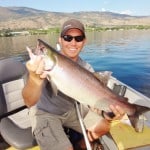
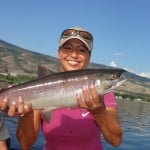
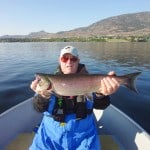
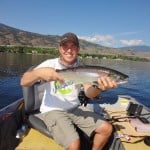
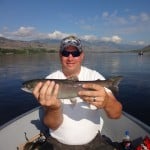
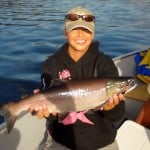
Recent Comments